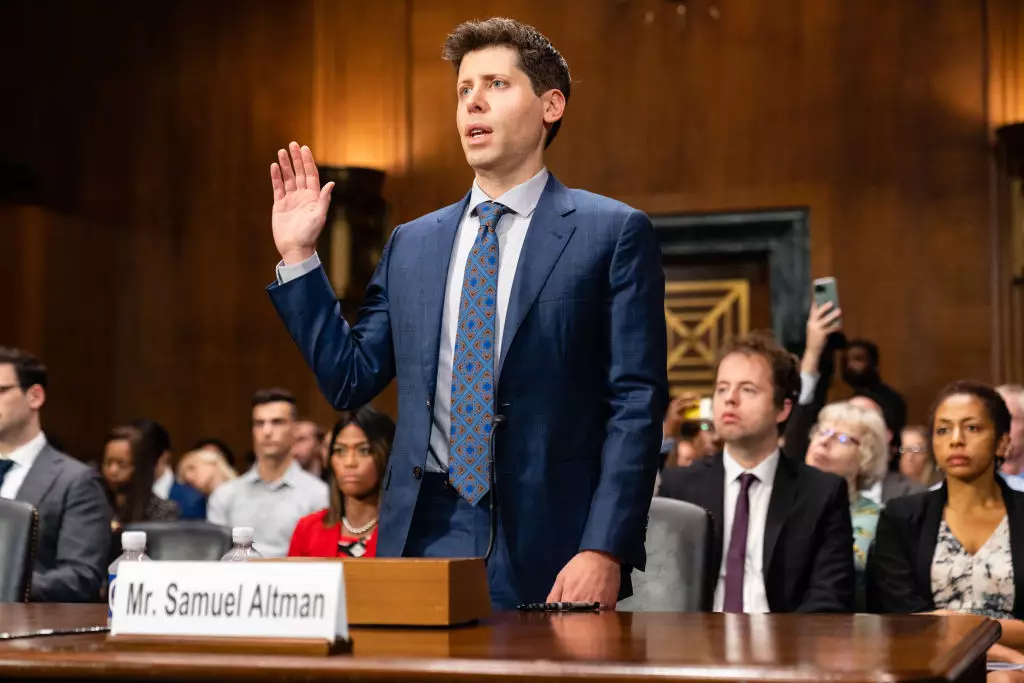The rapid rise and evolution of artificial intelligence (AI) technologies have spurred significant changes in how companies engage with lawmakers at both federal and state levels. This article takes a critical look at the escalating investment in AI lobbying efforts throughout 2024 and the challenges that accompany this surge in political engagement amidst a complex regulatory landscape.
In 2024, AI-related lobbying expenditures witnessed an astounding 141% increase compared to the previous year, with 648 companies participating in advocacy compared to 458 in 2023. This dramatic rise in spending highlights the growing urgency among businesses to define the regulatory framework governing AI technologies. Notably, major corporations like Microsoft are proactively backing legislation, such as the CREATE AI Act, aimed at establishing benchmarks for AI systems developed domestically. Meanwhile, OpenAI’s endorsement of the Advancement and Reliability Act signifies a collective push toward constructing a government center for AI research, which companies view as vital for further advancement.
Data reveals that companies primarily focused on AI technology—termed AI labs—are increasingly allocating funds to support legislative agendas. OpenAI alone escalated its lobbying budget from $260,000 in 2023 to an impressive $1.76 million in 2024. Similarly, Anthropic ramped up its budget from $280,000 to $720,000 during the same period, showcasing a thriving competitive market that is eager to influence the laws that govern their innovations.
The hiring of seasoned lobbyists reflects a strategic shift among AI companies to enhance their advocacy capabilities. For instance, Anthropic recently brought on board Rachel Appleton, a former Department of Justice official, as its first in-house lobbyist. Furthermore, OpenAI appointed Chris Lehane, a political veteran, to serve as its VP of policy. Such moves indicate a clear recognition that effective engagement requires specialized knowledge and diplomatic finesse, translating lobbying budgets into impact on policymaking processes.
It’s important to note that while AI lobbying expenditures are indeed small compared to the broader tech industry’s spending—tallying $61.5 million in the same timeframe—the 2024 expenditures of these AI labs demonstrate a robust commitment to strategically positioning themselves in the regulatory arena. The 2023 figures combined for these labs were a mere $610,000, underscoring the rapid scale of investment and interest in shaping AI policies.
2023 was marked by significant legislative activity concerning AI at the federal level. Congress considered more than 90 pieces of legislation related to AI, signaling a growing recognition of the need for regulatory oversight. Additionally, state legislatures proposed over 700 AI-related laws. However, tangible progress remained elusive, with states such as Tennessee and California making some advancements, though their efforts fell short of comprehensive regulations like those established by the European Union’s AI Act.
Despite occasional victories, such as Connecticut’s move to protect voice artists from unauthorized AI clones, deeper regulation continues to face formidable opposition. For example, California Governor Gavin Newsom recently vetoed a significant transparency bill, SB 1047, that aimed to impose strict requirements on AI developers, illustrating the intense lobbying power of special interests at play. Meanwhile, the challenges facing Texas’ TRAIGA legislation, which seeks to establish a more comprehensive framework, indicate that crafting an effective, widely accepted regulatory environment will take considerable time and effort.
Looking forward, the trajectory of AI legislation remains uncertain. Under former President Trump’s administration, there has been a push for deregulation, which some argue could hinder essential safety precautions. This administrative turn casts further doubt on whether a cohesive, federal approach to AI will materialize in the near future. Notably, the resistance against proactive measures is echoed by stakeholders like Anthropic, who warn that the window for effective risk prevention is rapidly closing.
The broad consensus among AI labs emphasizes the need for collaborative frameworks that match the technological pace while addressing potential risks associated with AI. As OpenAI encourages more decisive government actions on AI and related infrastructure, the necessity for dialogue between AI innovators and regulators becomes more critical than ever.
While lobbying efforts in the realm of AI are growing robustly, persistent obstacles in enacting comprehensive regulations highlight the challenges of aligning rapidly evolving technologies with effective governance. The coming years will be pivotal in determining the regulatory landscape’s future and its implications for the industry and society at large.

